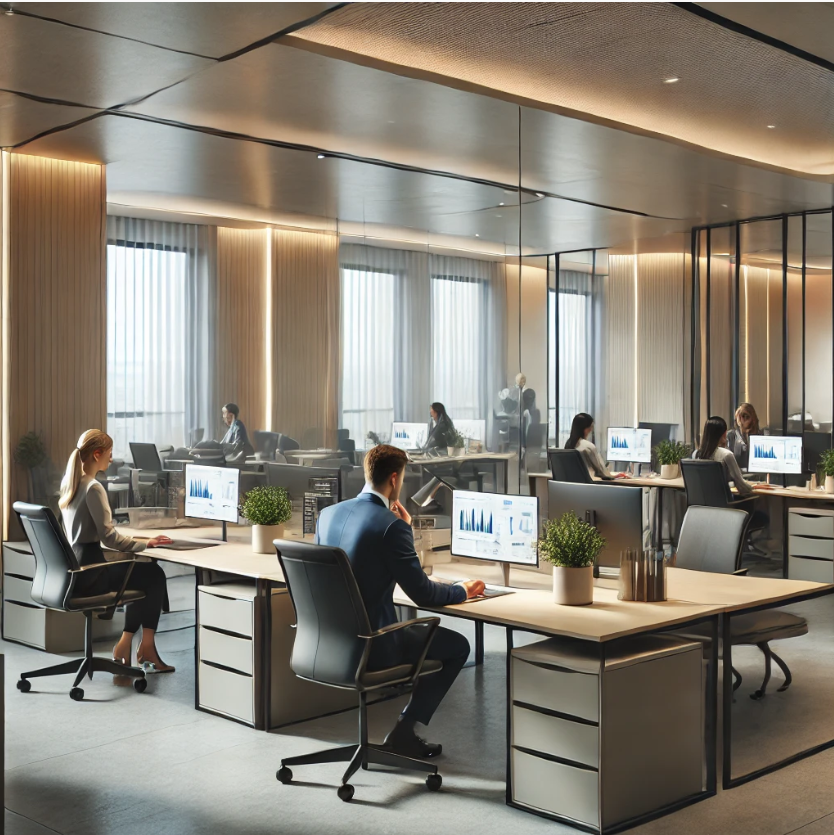Sound Masking Systems
What is Sound Masking?
Sound masking is a technique used to reduce the intelligibility of speech and ambient noise in a given environment, thereby improving privacy and comfort. It involves the introduction of a low-level, unobtrusive background sound—often resembling the sound of airflow—into the environment. This sound masks or covers up unwanted noises, making them less noticeable and distracting.
Key benefits and applications of sound masking include:
- Increased Speech Privacy: In open office layouts, sound masking helps to ensure that conversations in one area are not easily overheard in another, enhancing privacy and confidentiality.
- Enhanced Concentration: By reducing the impact of distracting noises, sound masking can help improve focus and productivity in workplaces.
- Comfortable Environment: It creates a more pleasant acoustic environment by minimizing disruptions caused by sudden noises.
- Healthcare Settings: Sound masking is used in hospitals and clinics to protect patient privacy and reduce stress caused by noise.
- Commercial Spaces: Retail stores, hotels, and other commercial spaces use sound masking to create a more comfortable and enjoyable experience for customers.
Sound masking systems typically consist of speakers installed in the ceiling or walls and a control unit that generates and distributes the masking sound. The sound level and frequency are carefully calibrated to suit the specific acoustics of the environment.
How do we Install a Sound Masking System?
1. Assessment and Planning
- Site Survey: We start with a detailed survey of the space to understand its acoustics, layout, and sound masking requirements.
- Needs Analysis: Identify areas requiring sound masking, such as open offices, private offices, conference rooms, or other specific zones.
- System Design: Develop a customized system design, determining the optimal number and placement of speakers and the control equipment.
2. Equipment Selection
- Speakers: Choose the right type of speakers for the space—be it in-ceiling, surface-mounted, or pendant speakers—depending on the ceiling type and aesthetic requirements.
- Control Unit: Select a control unit capable of generating and managing the masking sound, with features for adjusting volume and frequency.
- Cabling: Plan the routing of cables to connect speakers to the control unit.
3. Installation Preparation
- Ceiling Modifications: Make necessary modifications to ceiling tiles or structures to accommodate speaker installation.
- Electrical Setup: Ensure power supply availability for the control unit and any required power outlets for the speakers.
4. Speaker Installation
- Placement: Install speakers as per the design plan, usually in a grid pattern to ensure even sound distribution.
- Mounting: Secure speakers in ceiling tiles, on walls, or suspend them from the ceiling, ensuring they are firmly and safely mounted.
- Cabling: Run cables from each speaker to the control unit, concealing them to maintain a neat appearance.
5. Control Unit Setup
- Installation: Mount and connect the control unit to the power supply and speaker cables.
- Configuration: Configure the control unit to generate the appropriate masking sound, setting the volume and frequency to suit the space’s acoustic needs.
6. Calibration and Testing
- Initial Calibration: Use sound level meters and other acoustic measurement tools to calibrate the system, adjusting settings to achieve the desired masking effect without being intrusive.
- Testing: Conduct thorough testing across various areas to ensure consistent and effective sound masking, making any necessary adjustments based on feedback and measurements.
7. Training and Handover
- User Training: Provide training to the facility management team on operating and adjusting the system, including instructions on volume adjustments and troubleshooting.
- Documentation: Supply detailed documentation, including the system design, installation details, calibration settings, and user manuals.
8. Ongoing Maintenance
- Regular Checks: Schedule regular maintenance checks to ensure the system remains effective, inspecting speakers, the control unit, and overall sound levels.
- Adjustments: Make necessary adjustments based on changes in workspace layout or acoustic conditions.
This systematic approach ensures a successful sound masking system installation, enhancing speech privacy, reducing distractions, and creating a comfortable acoustic environment.

